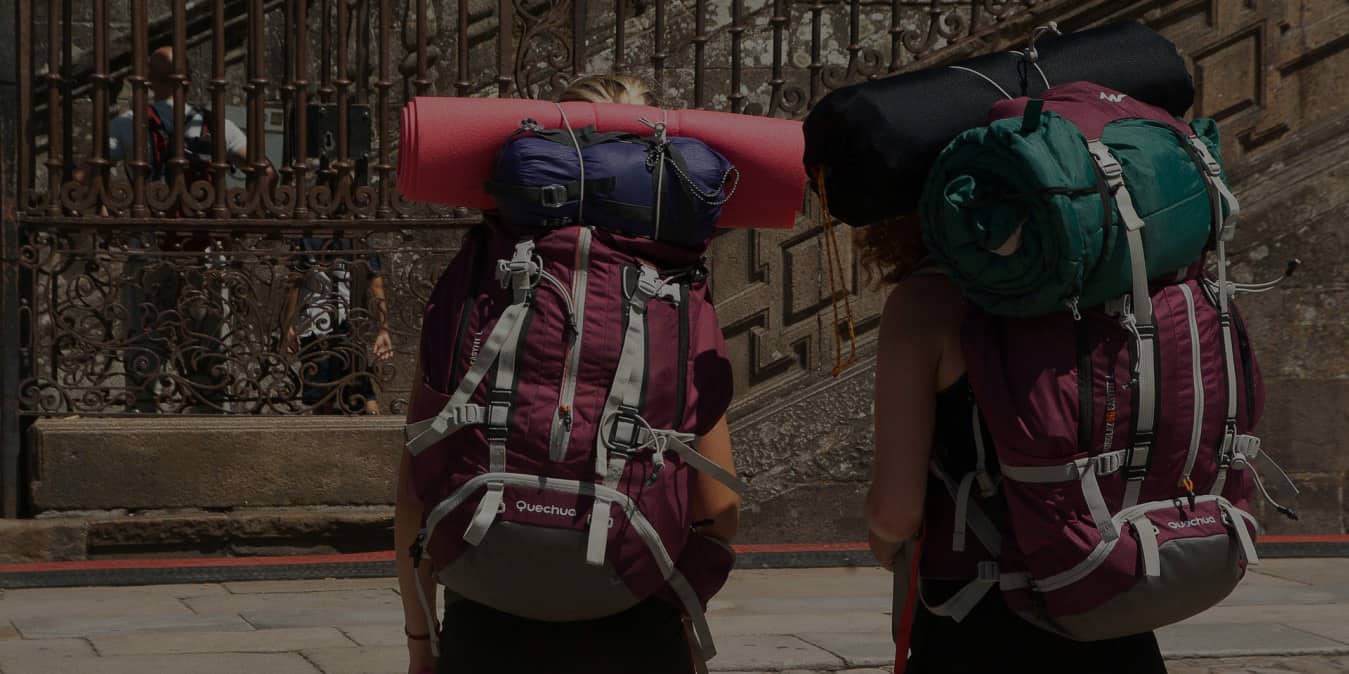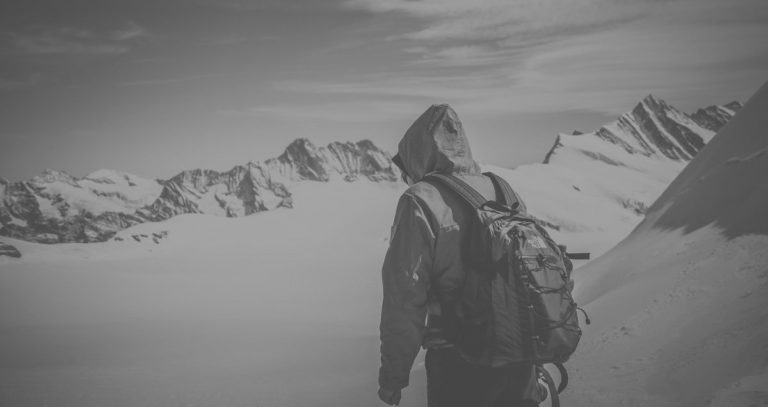The Best Survival Backpacks
Choosing a backpack for your bug out or survival trip can indeed have a major effect on your overall security and safety. In a bug-out scenario, you will be carrying all your gear for miles at a time, and in some cases for several hours or even days at a time. The best survival backpack is one that will carry the gear that you need for survival securely and comfortably. Experienced backpackers and hikers understand that how you pack your backpack and the features it has can have a huge impact on your energy level and stamina.
During a bug-out or survival trip, your level of energy and stamina is the biggest factor in your capacity to moving forward. If you are carrying all your gear in a backpack that doesn’t fit your body correctly or doesn’t balance your load properly, you will tire more easily. If you are tired, you won’t be as alert to your surroundings which in a survival situation can be deadly. So, for best results, don’t just choose any backpack to carry your survival gear. Do some research and determine the best survival backpack for your needs.

Urban
Quality/Durability
In an urban situation, there will be a lot more people around you. Those people may also be desperate to feed their families and find supplies to help them survive. A tactical or military-style backpack that stands out from what everyone else is used to seeing or carrying can make you a target for thieves and looters.
So, if you’re planning to bug out from an urban location, you may want to look at smaller, more compact backpacks that will still carry the gear you need without turning you into a moving target.
A simple backpack, a laptop bag or large messenger bag will be more common and can hold a lot of gear without making it obvious that you have survival supplies.
In inclement weather, you’ll be more likely to be able to get inside an abandoned building, or some other structure and the ground will be more even which means you could carry a heavier load if needed.
The size of your backpack depends on how long you expect to bug out, as well as on your level of skill. If you live in the city, you’re probably NOT a survivalist capable of living for months on end in the wilderness.
When something happens, you’re more likely to take your bag and drive off for no more than a few hours to your bug out location – and that’s fine.
Get a backpack and put every item in zipper bag to ensure it’s waterproof. You may even use an old backpack in the beginning, so long as it’s in good shape. You don’t have to spend the money if you don’t have to.

Rural
If you are bugging out from a rural location, you will come across some people to be sure, but the threat of thieves and looters is not as great as in the city—if you get out quickly and are ahead of the golden hordes.
In a more rural environment, a military style or large hiker-type backpack won’t automatically mean you stand out.
In a rural area, there will be less opportunity to take cover in inclement weather, so a waterproof backpack is more important. Also, you may find yourself crossing an open field or taking a shortcut through the woods, even without a trail.
You’ll need a backpack that moves with you, won’t get hung up on every tree branch or bramble or bounce around over rough terrain.
Rural preppers are also more likely to hunt, make traps, fish and make shelter in the middle of the wilderness. This could be because they don’t have a bug out location.
If this is you, then you’re going to need a lager backpack and, instead of making a bug out bag, you may want to consider a larger and more equipped INCH bag. INCH stands for I’m Never Coming Home and they are designed to keep you alive indefinitely without a roof over your head.
Colors
Once you’ve done your research and are familiar with some of the best survival backpacks, it’s a good idea to choose a color that won’t stand out and make you memorable. Avoid bright colors or unusual colors. Stick to muted colors or earth tones that will blend in with the environment: black, grey, dark blue, dark green. The color and pattern on your backpack should be nondescript and plain. Next time you’re in the city, pay close attention to the backpacks and bags others carry every day. Get something that won’t look out of place in the crowd.
Size/Weight
- Capacity is a feature that can be crucial for preppers. If you and your family are bugging out, you don’t want to make decisions about what items to bring based on whether they will fit into your pack or not. Backpacks come in a wide variety of sizes and the proper size for your needs will depend largely on your skill level and the amount of gear you must carry to ensure survival. For a serious bug out bag, get one with a capacity of about 50 liters, a little less if you’re a woman and/or you’re an urban prepper. Keep in mind you don’t have to fill it to the brim, you need to leave some extra space.
- Pockets are a very effective way to organize and store gear that you may need to access quickly and/or in less than ideal light or weather conditions. Most military style backpacks will feature several internal and exterior pockets in addition to the main compartment. Civilian backpacks or those designed for hikers, often sacrifice pockets to reduce pack weight. You’ll need to find another way to organize your supplies for easy access if you go this route.
- Attachment features are most often found in military style backpacks. Older bags utilize the ALICE system, and newer models feature the MOLLE system. Both systems are a great way to add capacity to your bag by attaching accessory pouches for things like magazines, canteen, first aid supplies, etc. Modern pouches are designed to be used with the MOLLE system so while ALICE bags may be less expensive, accessory pouches for the system may be more difficult to find since they are only available second-hand.
Quality/Durability
- Waterproof (never know what weather will bring) materials are ideal. Water resistant materials are better than nothing. If you must get a bag without water resistance or waterproofing, line your pack with a garbage bag or use dry bag to protect from rain and
- Stitching/Clips should be reinforced for strength and durability. Clips should be easy to operate with one hand and should fasten securely. A hole or fault clip while on the move in the dark can mean you lose gear without realizing it until it’s too late.
- Zippers should be high quality and not cheaply made. Large zipper pulls are easier to operate when wearing gloves. Paracord pulls should not come off when tugged roughly and zippers should move freely.
Fit/Comfort
To ensure the best fit for your backpack, have someone measure your torso length (base of neck down the spine to the top of hips. If the measurement is less than 16” get a small pack, between 16” but less than 20”, look for a medium pack, and if more than 20” torso length, you’ll be comfortable with a large pack. The shoulder straps on your backpack should hold the pack in place but should not bear all the weight. Most backpacks adjust to a range of hip sizes, but you want the belt to wrap around your two front pelvic bones in front and to sit just about an inch above your hips.
Where your backpack sits when you carry it makes a huge difference when it comes to how comfortable it is and how quickly it begins to “feel” heavy. Comfort isn’t as critical for short day trips, but it will be a crucial factor for a bug out trip where your life depends on your ability to carry a heavy pack for several hours at a time or several days in a row.
- Padding
Adequate padding in a hip belt prevents sores on hips and lower back and helps stabilize and lessen the impact of the backpack as you move around. The last thing you want to deal with during a SHTF situation is sores from a strap that rubs or aching shoulders from straps that don’t fit properly. Padded straps help distribute weight to your hips and will greatly reduce the impact on your neck and shoulders.
Padding in shoulder straps is also important. Wider straps tend to be more comfortable than thinner ones as the weight is more evenly distributed.
- Balance
During a bug out trip, you can never be sure when you may have to dodge, run, or duck for cover. One of the biggest threats to your security and that of your family will be other people. You may also need to carry a lot of gear, including food and water. Your ability to carry this gear for as long as you need to is critical to your survival. Your load must be balanced to carry your gear and remain mobile enough to take cover or run when needed. The best survival backpacks are designed to help you do this using shoulder and hip belts, a frame, or even pockets and attachment points.
- Ventilation
Look for mesh panels or other breathable material, especially between your back and the pack. There’s nothing worse in a survival situation than a backpack that sits too close against your back and causes you to sweat unnecessarily. Proper ventilation, especially where the backpack rests against your back is a big factor when it comes to comfort.
Small Bug Out Bags
Disclosure: when you click a link leading to a 3rd party website, I may earn a commission if you make a purchase. As an Amazon Associate I earn from qualifying purchases.
Drawstring Gym Bag

Men’s Nike Alpha Gym Bag
These are generally one pocket with drawstring straps. They are designed to carry lighter weight items such as extra clothing and small personal hygiene items. The straps are adjustable but may not be very comfortable for a long period if the bag is heavy, although they are designed to sit low on the hips.
A smaller version could work as a bug out bag for younger children who are only able to carry a few comfort items or for elderly who simply can’t carry much weight.
Waist Pack

Sierra Highlands Marlette Hiking Waist Bag
Small bags like hese can make good bug out bags for young children or those with mobility issues.
Weight of bug out bag items is distributed around the hips rather than the back and shoulders and may be easier for small children or elderly to carry for long periods.
As they are significantly smaller than a backpack, these may only work for some family members (toddlers) where there is little chance they will get separated from the group or who simply can’t carry a full-sized bug out bag.
Internal Frame Packs

One of the lightest internal frame backpacks available at just 3.9 lbs., this Osprey pack includes an “anti-gravity” suspension feature that kicks the pack into a league of its own.
With a 65L capacity, you’ll have plenty of room for your gear. It has adequate ventilation, padded hip belt, and straps, and an optional rain cover to keep everything dry. Compression straps help with load stabilization and make it a popular choice for hikers and backpackers.
If your budget can afford this high-quality backpack, this pack molds to your body and gives the feeling that your gear is floating. Your back will certainly thank you when SHTF and you’ve got to set out on foot carrying all your survival gear.
Teton Sports Scout 3400 Backpack
Slightly heavier at 4.5 pounds, although still considered lightweight, the Teton Sports Scout 3400 is a high-quality backpack for budget conscious preppers.
With a 55-liter capacity, it’s a great pack for those who have learned how to scale back to just the important gear. With flexible torso length adjustment from 15-20” a dual aluminum frame, and compression straps you can easily balance your sleeping gear and all your supplies.
Berghaus Centurio 45
is bigger than it looks at first glance. It has an expandable top for extra gear and side straps for securing large items such as snow skis or snowshoes.
The top flap and front have webbing that is ideal for MOLLE type attachments. Shoulder straps are well-padded, and a sternum strap keeps them secure. It has a wide tactical belt which is thinner than most which make it ideal when worn over a tactical-type vest.
For additional capacity, you can purchase optional side zipped pockets called a Multi-Mission Pack System (MMPS).
The MMPS system is compatible with other Berghaus backpacks and comes with its own straps which mean each pocket can be worn as an over the shoulder pack.
The MMPS system also provides great flexibility to carry more or less gear as needed or to separate compartments to fit better into smaller storage spaces such as an overhead airline compartment.

…is a slightly heavier pack due to a more substantial internal frame system that works in conjunction with the straps and padding to enhance comfort. It includes tons of pockets and a drawstring center divider. It also includes a rain cover and wide bottom back scabbard for a rifle.
The rifle pouch is nice if you need to conceal your weapon completely. Some users have reported that the rifle pouch design causes quite a bit of swaying when you move over uneven ground even when cinched tight using the compression straps. Possible workarounds for this include using the rifle pouch for hydration bladder storage or extra storage for clothing or other items.
External Frame Packs
The main benefit of backpacks with external frames is the capacity to carry a larger amount of weight. These are the traditional style packs where the frame is separate or outside the actual backpack. Gear lovers will be drawn to these packs because they typically have an assortment of pockets which makes it easy to organize gadgets for quick access. The external frame is also great for ventilation and for using to “hang” or “tie” extra gear that won’t fit inside the pack.
The downside to these external frame packs is usually their bulkiness. Those shorter in stature will want to consider the weight of each item carefully to ensure the load is as well-balanced as possible to prevent a toppling over effect. For preppers who are looking for a bug out bag, if your bug out route takes you through narrow alleyways or trails, you may prefer an internal frame pack the better molds to your back and provides much more mobility.

ALPS OutdoorZ Commander Freighter Backpack
The ALPS Outdoorz Commander is a top notch high-quality external frame backpack with webbing loops. The pack bag is removable, so you can use the lashing strap and Clevis pin system for carrying meat.
The entire pack and frame weigh in at just over 7 lbs. but has an adjustable torso range of 17-23” It has a drawstring top closure, a rifle boot, and plenty of side pockets for organizing your gear. The only disadvantage to this pack from a survival standpoint is that it’s not designed to be waterproof. This can be remedied using dry bags or other materials to protect it and contents from rain.
It’s one of the best survival backpacks in its price range and can be found for slightly over $100.

ALICE Military Style Field Pack(All Purpose Lightweight Individual Carrying Equipment)
The ALICE Military packs with the right straps are often used as backpacks on their own, but are designed for use in conjunction with an ALICE frame.
Typically made of canvas with a water-resistant lining, the benefit of ALICE backpacks is their durability and expandable capacity. Also, there are no zippers, and the pack is adjustable to its contents using the straps.
The metal buckle closures can sometimes be more tedious to open and close and because the center compartment is large and open, it can be more difficult to find what you need quickly, and packs can become bulky and unstable if not packed in a balanced way.
You can find these bags secondhand online or in surplus stores in a variety of sizes but be sure to inspect what you are buying carefully. You will need shoulder straps and a hip belt to attach the ALICE backpack to the frame.
The ALICE frame also has an optional cargo shelf that can be attached to enable you to carry very heavy items such as 5-gallon water jugs or loaded ammo boxes.

MOLLE (Modular lightweight load-carrying equipment)…
…is pronounced “Molly.” Launched by the military in the late 1990’s to replace the ALICE system, the system is completely customizable using the main compartment, a bladder compartment, and a multitude of webbing as attachments points for accessories and modular pouches. Modules and pockets make it easy to organize gear for quicker access. The larger MOLLE comes with a divided compartment for sleeping gear.
The MOLLE system is more lightweight and streamlined which hikers and regular backpackers will appreciate. There are more zippers and/or Velcro closures which mean you may experience more incidences of breakage. Some come with a mesh or clear map case on the inside of the top flap. There is a multitude of brands to choose from that manufacture MOLLE style backpacks.
Final Words
Before choosing from the best survival backpacks available on the market today, do a thorough evaluation of your needs when it comes to gear and other supplies. It’s also helpful to consider the type of terrain and other obstacles you may be confronted with during a bug out trip or survival situation.
Internal frame packs tend to be more stable and provide more mobility than external frame packs but may not provide as much support to relieve the burden of heavier loads. Consider the amount and type of gear you need to carry as well as your level of physical fitness. Internal frames are usually better as they’re less likely to get tangled in branches or other things you pas by.



